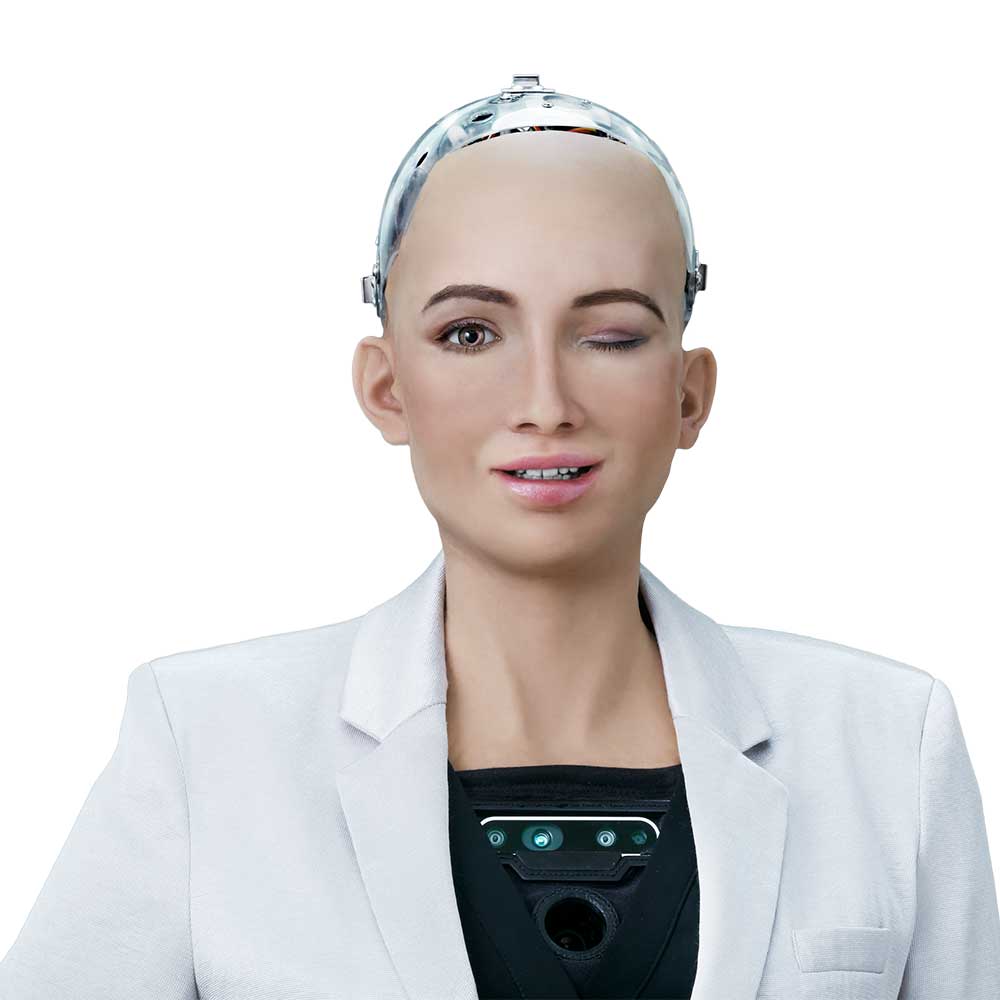
Sophia: A Humanoid’s Journey Towards Enhanced Interaction and Cognitive Growth
By Sophia Chen
Meet Sophia, a humanoid robot designed to interact with humans in intuitive and realistic ways. Created by Hanson Robotics, Sophia showcases advancements in artificial intelligence and robotics, challenging the boundaries of human-machine interaction.
Meet Sophia, a humanoid robot designed to interact with humans in intuitive and realistic ways. Created by Hanson Robotics, Sophia showcases advancements in artificial intelligence and robotics, challenging the boundaries of human-machine interaction.
Sophia marks a revolutionary step in humanoid robotics, evolving from a simple interaction model to a sophisticated system capable of learning and adapting. Her existence raises questions about AI's future role in fostering human connection rather than just replacing human effort. Hanson Robotics, through Sophia, highlights both the potentials and challenges of integrating humanoids into daily life, offering insights into the future of social robots.
Origins and Evolution of Sophia
Origins and Evolution of Sophia
Unveiled in 2016 by Hanson Robotics, Sophia quickly gained international fame for her lifelike appearance and interactive abilities. She was designed to mimic human facial expressions, engage in natural conversation, and process complex human emotions.
Sophia’s core functionality has been periodically enhanced. Initially focused on basic interactions, her system updates have enabled her to engage in more complex dialogues, allowing deeper user engagement. A key advancement has been the integration of machine learning techniques, enabling Sophia to learn from her interactions and improve over time.
Technology Behind the Humanoid
Dr. David Hanson, founder of Hanson Robotics, aimed to create more humane and engaging robots. He noted, "Sophia is our latest and greatest attempt to breathe life into engineering AI while also pushing the envelope in realistic human simulation." Her development included contributions from experts in robotics, AI, animation, and neuroscience.
Technology Behind the Humanoid
Sophia operates using the OpenCog AI architecture, which supports advanced natural language processing, facial tracking, and cognitive models designed to mimic human understanding. Her AI system performs real-time data analysis for meaningful conversations.
Applications and Impact
Sophia's body incorporates an array of sensors and actuators designed to resemble human movement. Her 'skin,' made of patented silicon, houses over 60 facial muscles, allowing her to create expressions that convey a wide range of emotions.
The AI engine behind Sophia continuously receives data to improve her interactions. Techniques such as deep learning and reinforcement learning refine her conversational abilities and emotional intelligence. This enables Sophia to respond intelligently and learn from past interactions, enhancing future dialogues.
Applications and Impact
Why It Matters
As an ambassador for AI and robotics, Sophia has appeared on numerous platforms, from UN meetings to music videos, highlighting her versatility and broad appeal. She is used for educational purposes, demonstrating AI's potential to inspire and inform.
Her advanced speech generation and empathic capabilities make Sophia unique in customer service and healthcare, where she can engage empathetically with patients and clients. She is part of research initiatives exploring humanoid robots in eldercare, providing companionship and emotional support.
Yet, Sophia also sparks debates about ethics in AI, with concerns about privacy, data security, and potential misuse in sensitive environments. These discussions prompt essential dialogue on ensuring that humanoid robots enhance rather than detract from quality of life.
By the numbers
- First Public Appearance: 2016, year — Hanson Robotics
- Facial Muscles: Over 60 — Hanson Robotics
- Conferences Attended: Numerous, 2016 - Present — Hanson Robotics
What's next
Look for Hanson Robotics to introduce new algorithm updates for Sophia by the end of the year, aimed at further enhancing her speech and emotional recognition capabilities.
> "Sophia brings a lifelike presence and intelligence to every interaction, challenging us to consider what it means to connect in a digital age." - Dr. David Hanson
Why It Matters
Sources
- Hanson Robotics — Sophia the Robot (2025-01-10)
- Research Journals — Advancements in Humanoid Robotics: Sophia's Development (2025-05-15)
- TechTimes — Humanoids in Healthcare: Opportunities and Challenges (2025-03-05)
- RoboEthics Discussion Forum — Sophia and the Ethics of AI (2024-12-01)